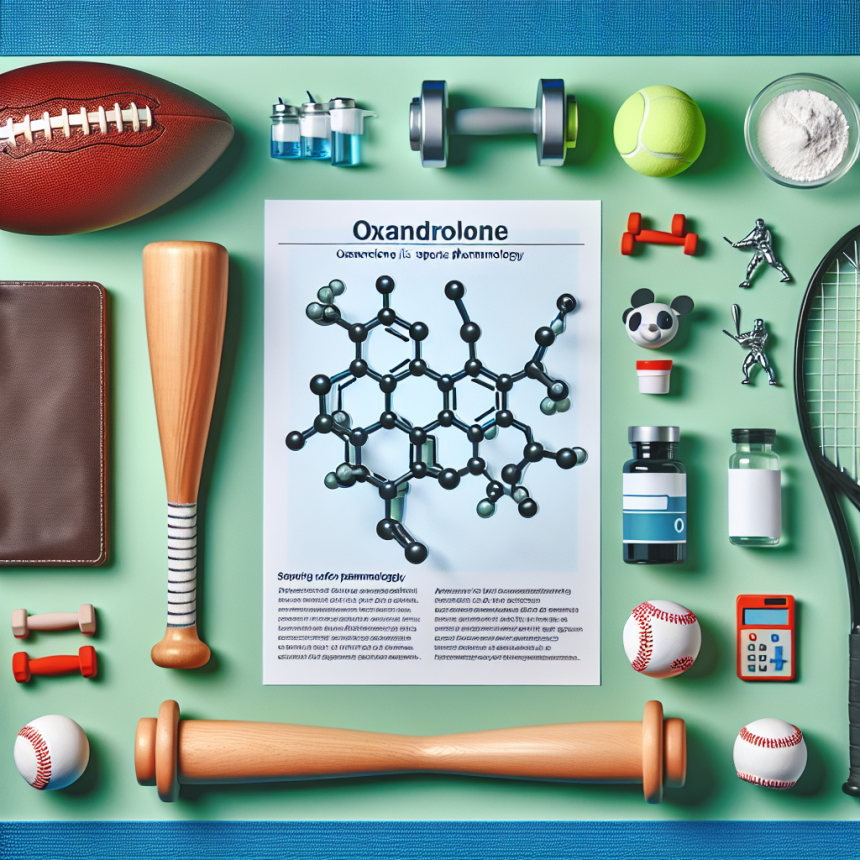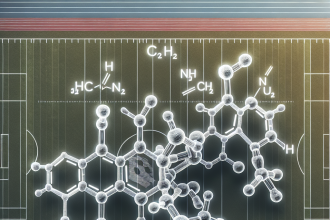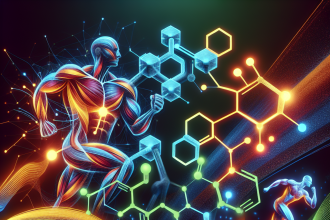-
Table of Contents
“`html
Role of oxandrolone in sports pharmacology
In the realm of sports pharmacology, the use of anabolic-androgenic steroids (AAS) has been a topic of both intrigue and controversy. Among these, oxandrolone stands out due to its unique properties and applications. This article delves into the role of oxandrolone in sports pharmacology, exploring its pharmacokinetics, pharmacodynamics, and its impact on athletic performance.
Understanding oxandrolone
Oxandrolone, commonly known by its brand name Anavar, is a synthetic anabolic steroid derived from dihydrotestosterone (DHT). It was first introduced in 1964 by Searle Laboratories, now part of Pfizer Inc., and has since been used for various medical and athletic purposes. Unlike many other AAS, oxandrolone is known for its mild androgenic properties, making it a preferred choice for both male and female athletes (Basaria et al. 2001).
Pharmacokinetics and pharmacodynamics
Oxandrolone exhibits a unique pharmacokinetic profile. It is orally bioavailable, with a bioavailability rate of approximately 97% due to its resistance to hepatic metabolism. This high bioavailability is attributed to the presence of a 17-alpha-methyl group, which prevents its breakdown in the liver (Kicman 2008). The half-life of oxandrolone is approximately 9 hours, allowing for twice-daily dosing to maintain stable plasma levels.
Pharmacodynamically, oxandrolone binds to androgen receptors, promoting protein synthesis and muscle growth. It also enhances nitrogen retention, which is crucial for muscle repair and growth. Unlike other AAS, oxandrolone does not aromatize into estrogen, reducing the risk of estrogenic side effects such as gynecomastia (Bagatell et al. 1996).
Applications in sports
Oxandrolone is widely used in sports for its ability to enhance muscle mass and strength without significant weight gain. This makes it particularly appealing to athletes in weight-class sports such as wrestling, boxing, and mixed martial arts. Additionally, its mild androgenic effects make it suitable for female athletes who wish to avoid the virilization effects associated with other AAS (Hartgens and Kuipers 2004).
Real-world examples
Several athletes have reportedly used oxandrolone to improve their performance. For instance, it has been used by bodybuilders during cutting cycles to preserve lean muscle mass while reducing body fat. In endurance sports, oxandrolone has been used to enhance recovery and reduce muscle damage after intense training sessions (Bhasin et al. 1996).

Safety and side effects
While oxandrolone is considered one of the safer AAS, it is not without potential side effects. Common adverse effects include liver toxicity, alterations in lipid profiles, and suppression of endogenous testosterone production. However, these effects are generally dose-dependent and can be minimized with proper dosing and cycle management (Basaria et al. 2001).
In female athletes, the risk of virilization is lower compared to other AAS, but it is still a concern at higher doses. Therefore, careful monitoring and adherence to recommended dosages are essential to minimize these risks (Hartgens and Kuipers 2004).

Regulatory considerations
Oxandrolone is classified as a controlled substance in many countries, including the United States, where it is listed as a Schedule III drug under the Controlled Substances Act. Its use is prohibited by most sports organizations, including the World Anti-Doping Agency (WADA), due to its performance-enhancing effects (WADA 2021).
Despite these restrictions, oxandrolone remains popular among athletes due to its efficacy and relatively mild side effect profile. This underscores the ongoing challenge of balancing the benefits of AAS in sports with the need to maintain fair competition and athlete safety.
Expert opinion
In conclusion, oxandrolone plays a significant role in sports pharmacology due to its unique properties and applications. Its ability to enhance muscle mass and strength while minimizing weight gain and side effects makes it a valuable tool for athletes. However, its use must be carefully managed to avoid potential health risks and comply with regulatory standards. As research continues to evolve, it is crucial for sports pharmacologists and healthcare professionals to stay informed about the latest developments in AAS use and regulation.
References
Bagatell, C. J., Bremner, W. J. (1996). Androgens in men—uses and abuses. New England Journal of Medicine, 334(11), 707-714.
Basaria, S., Wahlstrom, J. T., Dobs, A. S. (2001). Clinical review 138: Anabolic-androgenic steroid therapy in the treatment of chronic diseases. Journal of Clinical Endocrinology & Metabolism, 86(11), 5108-5117.
Bhasin, S., Storer, T. W., Berman, N., et al. (1996). The effects of supraphysiologic doses of testosterone on muscle size and strength in normal men. New England Journal of Medicine, 335(1), 1-7.
Hartgens, F., Kuipers, H. (2004). Effects of androgenic-anabolic steroids in athletes. Sports Medicine, 34(8), 513-554.
Kicman, A. T. (2008). Pharmacology of anabolic steroids. British Journal of Pharmacology, 154(3), 502-521.
World Anti-Doping Agency (WADA). (2021). The World Anti-Doping Code: The 2021 Prohibited List. Retrieved from https://www.wada-ama.org




